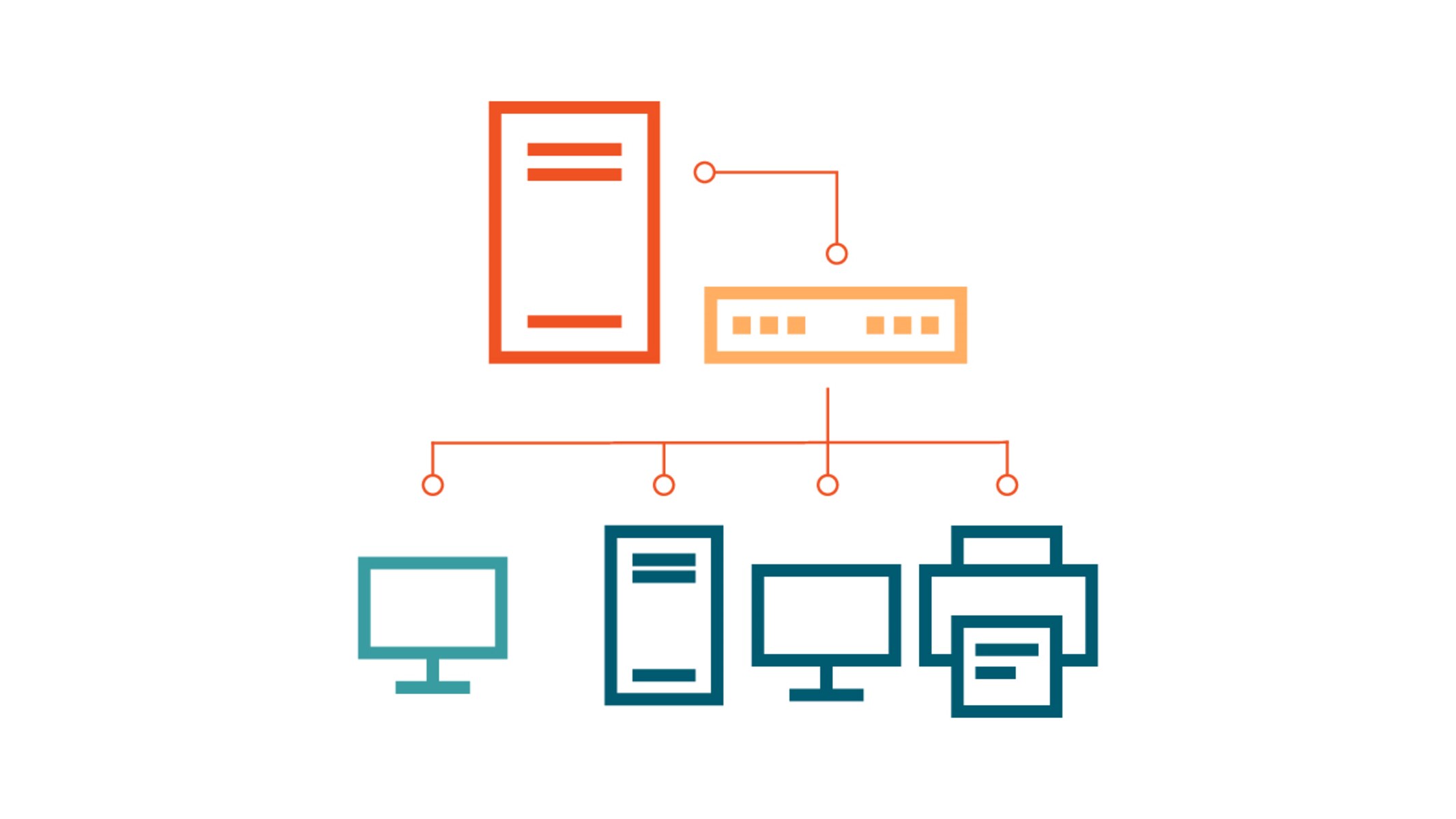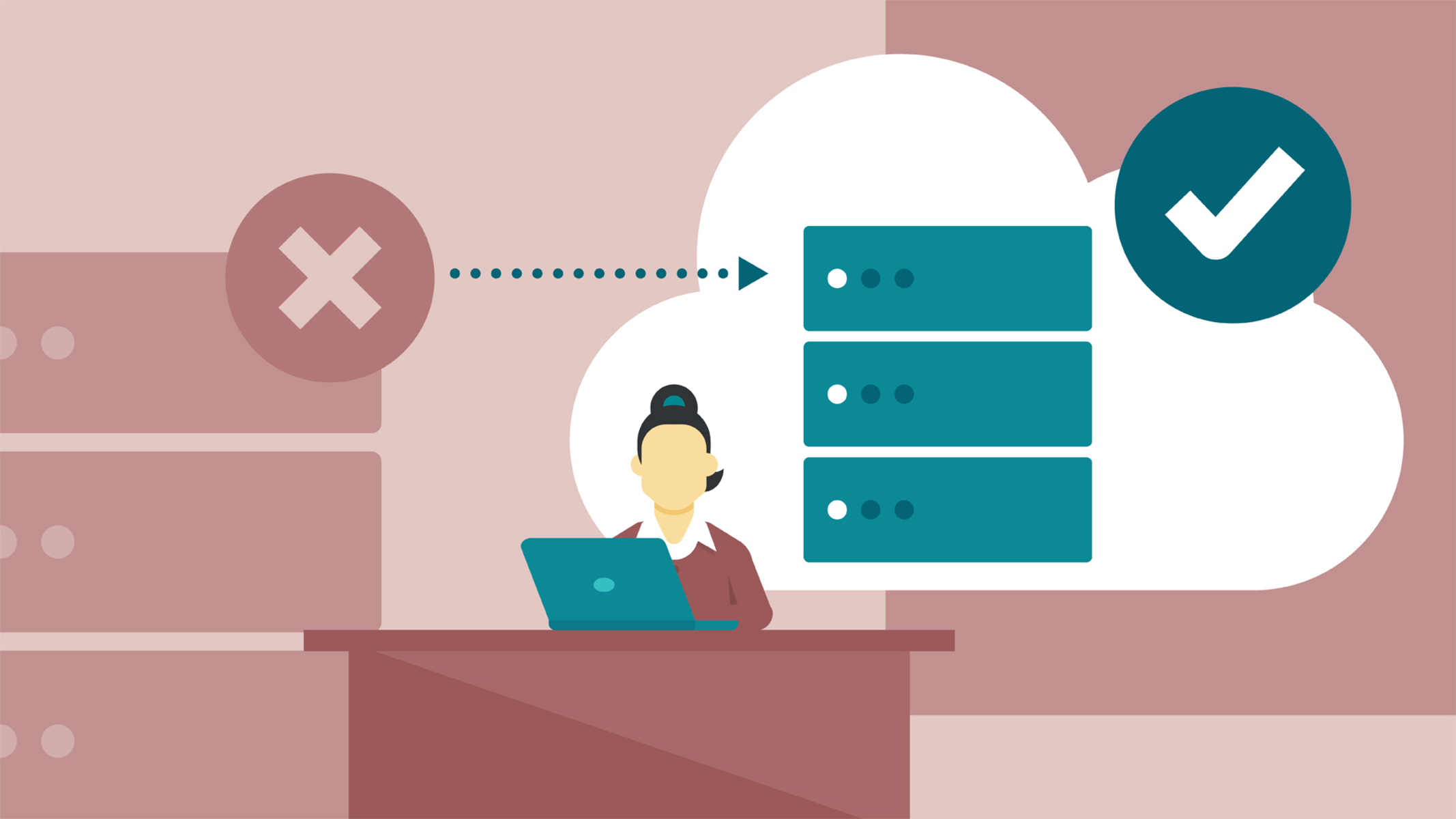Introduction
Adding a large number of domain accounts to a workstation can be a daunting task, especially if you are not familiar with the process. However, by following a few simple steps, you can easily accomplish this task and ensure that all domain users have access to the workstation.
Whether you are setting up a new workstation or managing an existing one, it is important to properly configure domain accounts to maintain seamless user access and security. By efficiently adding domain accounts to your workstation, you can save time and improve productivity.
In this guide, we will walk you through the step-by-step process of adding a large number of domain accounts to a workstation. From preparing the domain accounts to assigning the appropriate user rights, we will cover all the necessary steps to successfully integrate domain accounts with your workstation.
Before we begin, it is important to note that this guide assumes you have administrative access to both the domain controller and the workstation. If you do not have the necessary privileges, we recommend contacting your IT department or network administrator for assistance.
Now, let’s dive into the details and learn how to efficiently add domain accounts to your workstation!
Step 1: Prepare the Domain Accounts
Before you can add domain accounts to a workstation, it is essential to ensure that the necessary user accounts have been created on the domain controller. This can be done by your IT department or network administrator. Here are the steps to prepare the domain accounts:
- Identify the domain accounts needed: Determine the list of domain accounts that need to be added to the workstation. This can include individual user accounts or group accounts, depending on your specific requirements.
- Create new domain accounts if necessary: If any required domain accounts are missing, create them on the domain controller. Provide appropriate usernames and passwords for each account, keeping in mind any password policy requirements in place.
- Assign necessary permissions: Ensure that the domain accounts have the necessary permissions and access rights for the workstation. This may include granting administrative privileges or specific permissions based on user roles and responsibilities.
- Communicate credentials to users: Once the domain accounts have been prepared, communicate the usernames and passwords to the respective users. It is important to securely share this information to maintain the confidentiality and security of the domain accounts.
By properly preparing the domain accounts, you can ensure that the necessary user credentials are in place and ready to be added to the workstation. Proceed to the next step to connect the workstation to the domain and begin the account integration process.
Step 2: Ensure Workstation is Connected to the Domain
Before you can add domain accounts to a workstation, it is crucial to establish a connection between the workstation and the domain. Here are the steps to ensure your workstation is connected to the domain:
- Check network connectivity: Ensure that the workstation is connected to the network and has a stable internet connection. This will allow the workstation to communicate with the domain controller and authenticate the domain accounts.
- Join the domain: Access the system settings on the workstation and navigate to the “System Properties” or “Computer” settings. Look for the option to join a domain and provide the necessary credentials. Enter the domain name and the credentials of a user with administrative privileges on the domain controller.
- Verify domain connection: Once the workstation has joined the domain, restart the computer to apply the changes. After rebooting, ensure that the workstation is connected to the domain by checking the system properties or the network settings. Look for the domain name displayed alongside the computer name.
- Test network connectivity: To ensure that the workstation is successfully connected to the domain, test network connectivity by accessing network resources such as shared folders or network printers. If you encounter any issues, reach out to your IT department or network administrator for further assistance.
By confirming that your workstation is connected to the domain, you can proceed to the next step of adding the domain accounts to the workstation. This connection is vital for the seamless integration of domain accounts and their associated privileges on the workstation.
Step 3: Access Local Users and Groups
Now that your workstation is connected to the domain, you need to access the Local Users and Groups management console to add the domain accounts. Follow these steps to access the Local Users and Groups:
- Open the Computer Management console: Right-click on the “Start” button and select “Computer Management” from the context menu. This will open the Computer Management console.
- Navigate to the Local Users and Groups: In the Computer Management console, expand the “System Tools” folder and then the “Local Users and Groups” folder. Click on “Users” or “Groups” to access the respective management sections.
- Add new users: To add domain user accounts, right-click on the “Users” folder and select “New User” from the context menu. Enter the username and domain account details provided by the administrator, and set any additional settings as required.
- Add new groups: If you need to add domain group accounts, right-click on the “Groups” folder and select “New Group” from the context menu. Enter the group name and description, and add the appropriate domain user accounts to the group.
- Configure user properties: After adding user accounts, you can further configure their properties such as password requirements, account expiration, and user group memberships. Right-click on the user account and select “Properties” to access these settings.
- Assign user permissions: If necessary, assign specific permissions or user rights to the domain user accounts. Right-click on the user account, select “Properties,” and navigate to the “Member Of” tab to add the required groups or assign individual permissions.
By accessing the Local Users and Groups management console, you can easily add domain user and group accounts to the workstation. This allows you to manage user access and permissions efficiently and ensures that the domain accounts are properly integrated with the workstation’s local security settings.
Step 4: Add Domain Accounts to the Workstation
Now that you have accessed the Local Users and Groups management console, you can proceed to add the domain accounts to the workstation. Follow these steps to add the domain accounts:
- Open the Local Users and Groups management console: If you haven’t already done so, open the Computer Management console by right-clicking on the “Start” button and selecting “Computer Management” from the context menu. Navigate to the “System Tools” folder and then the “Local Users and Groups” folder.
- Add domain users: To add a domain user account, right-click on the “Users” folder and select “New User” from the context menu. In the New User dialog box, enter the username and domain account details provided by the administrator. Set any additional settings as required.
- Add domain groups: If you need to add a domain group account, right-click on the “Groups” folder and select “New Group” from the context menu. Enter the group name and description, and add the appropriate domain user accounts to the group.
- Assign group membership: If adding individual user accounts, you can assign them to appropriate domain groups. Right-click on the user account, select “Properties,” and navigate to the “Member Of” tab. Click on “Add” and enter the name of the domain group to assign the user to that group.
- Set user properties: After adding the domain accounts, you can further customize their properties. Right-click on the user account, select “Properties,” and navigate through the various tabs to configure settings such as password requirements, account expiration, and user group memberships.
- Apply changes: Once you have added and configured the domain accounts, click “OK” or “Apply” to save the changes. The workstation will now recognize and integrate these domain accounts into its local users and groups.
By successfully adding the domain accounts to the workstation, you have ensured that the respective users or groups have appropriate access and permissions on the local machine. This integration allows smooth user login and access control, enhancing the overall functionality and security of the workstation.
Step 5: Assign Appropriate User Rights
After adding the domain accounts to the workstation, it is important to assign appropriate user rights to ensure that users have the necessary permissions to perform their tasks. Follow these steps to assign user rights:
- Open the Local Security Policy: Access the Local Security Policy on the workstation by opening the Run dialog (press the Windows key + R), typing “secpol.msc,” and hitting Enter.
- Navigate to User Rights Assignment: In the Local Security Policy window, expand the “Local Policies” folder and select “User Rights Assignment.”
- Assign user rights: Scroll through the list of policy settings to find the specific user rights you want to assign. Double-click on each policy to open its properties window.
- Add domain users or groups: In the policy properties window, click on the “Add User or Group” button. Enter the name of the domain user or group to whom you want to assign the user right, and click “Check Names” to validate the entry.
- Configure user rights: Once the domain user or group is added, configure additional settings for the user right if necessary. These settings can include defining which users or groups have the right to perform the action, enabling or disabling the right, or setting any related conditions or restrictions.
- Apply changes: Once you have assigned and configured the user rights, click “Apply” or “OK” to save the changes. The assigned user rights will now take effect for the respective domain user accounts on the workstation.
By assigning the appropriate user rights, you grant users the necessary privileges to perform specific actions on the workstation. This ensures that they have the required permissions to carry out their tasks effectively and securely.
Step 6: Test Domain Account Access on the Workstation
Once you have added the domain accounts and assigned user rights on the workstation, it is crucial to test the domain account access to ensure everything is functioning as expected. Follow these steps to test domain account access:
- Log out of the workstation: If you are currently logged in with your administrator account, log out to test the domain account access. You can do this by clicking the “Start” button, selecting the user icon, and choosing “Sign out.”
- Log in with the domain account: On the login screen, click on the “Other User” option or enter the domain account username directly. Provide the associated password and click “Sign in” to log in to the workstation with the domain account.
- Verify account access: After logging in with the domain account, check if you can access the necessary resources and applications on the workstation. Test various functions and permissions assigned to the domain account to ensure it has the appropriate access level.
- Resolve any access issues: If you encounter any access issues or errors while testing the domain account access, verify the user rights and permissions assigned to the account. Double-check the group memberships, security settings, and any applicable restrictions. Adjust these settings as needed to resolve the issues.
- Repeat the testing process: To validate the consistency of domain account access, repeat the testing process with other domain user accounts and groups. This will help ensure that all domain accounts have the necessary access rights and that the workstation is functioning properly.
By thoroughly testing the domain account access, you can confirm that users can log in and perform their tasks seamlessly on the workstation. Regular testing helps identify any access issues or discrepancies, allowing you to troubleshoot and resolve them promptly.
Conclusion
Adding a large number of domain accounts to a workstation may initially seem like a complex task, but by following the step-by-step process outlined in this guide, you can efficiently integrate domain accounts and ensure smooth user access and security. Here is a summary of the steps involved:
- Prepare the domain accounts by identifying the accounts needed, creating them if necessary, and assigning the appropriate permissions.
- Ensure the workstation is connected to the domain by checking network connectivity, joining the domain, and verifying the domain connection.
- Access the Local Users and Groups management console to add and configure the domain accounts on the workstation.
- Assign appropriate user rights through the Local Security Policy settings to grant users the necessary permissions for their tasks.
- Test the domain account access on the workstation by logging in with the domain accounts and verifying their access to resources and applications.
By following these steps, you can successfully add a large number of domain accounts to a workstation and ensure that users have the necessary access and permissions to perform their tasks. This integration enhances the functionality and security of the workstation, promoting a seamless user experience.
Remember to regularly review and update user accounts, permissions, and security settings to align with any changes in user roles or organizational requirements. Additionally, reach out to your IT department or network administrator for any specific guidance or support throughout the process.
Now that you have the knowledge to add domain accounts to a workstation, you can confidently manage user access and improve productivity in your organization. Keep implementing best practices in account management and workstation security to maintain a secure and efficient computing environment.

























